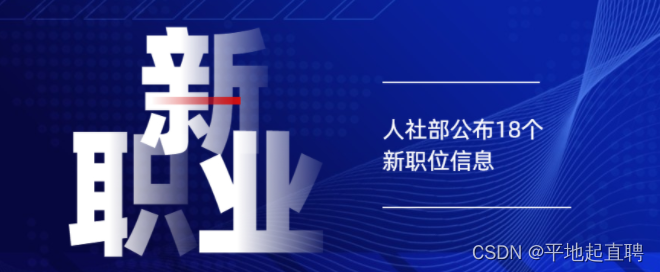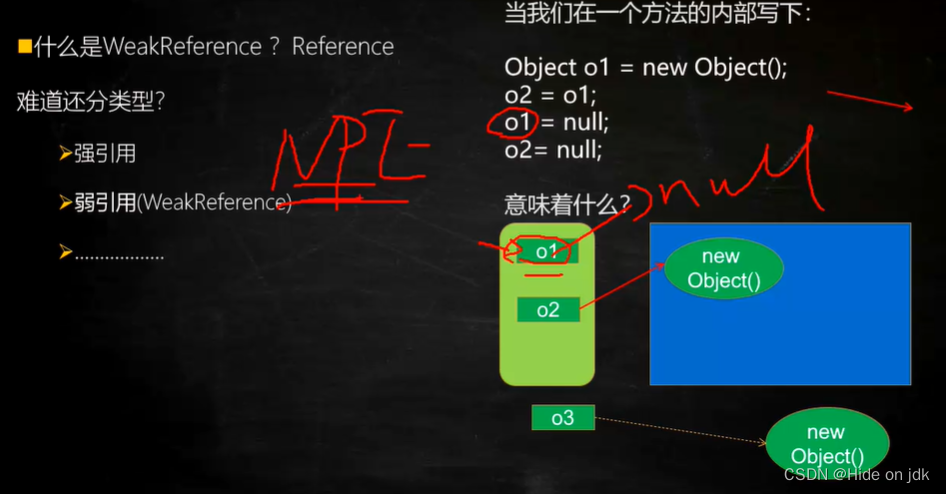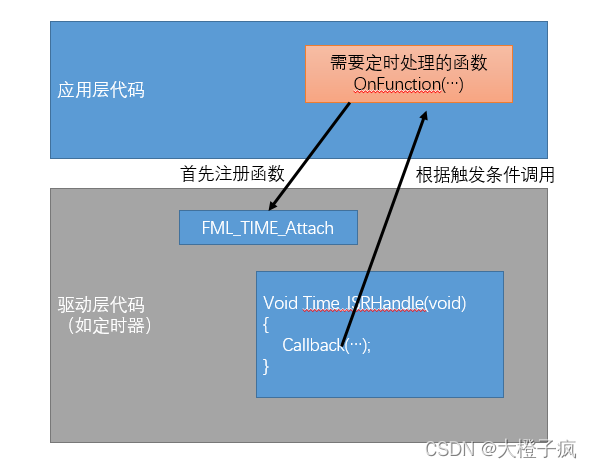当前位置:网站首页>[glide] cache implementation - memory and disk cache
[glide] cache implementation - memory and disk cache
2022-07-04 17:00:00 【Jkwen2022】
brief introduction
This article is mainly a preliminary understanding of Glide Cache mode and implementation of , It is mainly divided into the following parts :
- Glide Cache mode of
- Principle of memory and disk cache
- Specific implementation of cache algorithm
Glide Cache mode of
Glide There are two main cache methods , Memory cache and disk cache . Memory cache , Depending on whether the data is currently in use , And then you can subdivide it into Active and Not Active. Disk cache , According to whether deformation has been carried out , And then you can subdivide it into Resource Cache「 Refers to the cache after deformation 」 and Data Cache「 Refers to the source data cache 」. Here is a brief introduction to memory and disk cache .
//GlideBuilder.java
@NonNull
Glide build(@NonNull Context context) {
// Omitted code ...
// Implementation of memory cache
if (memoryCache == null) {
memoryCache = new LruResourceCache(memorySizeCalculator.getMemoryCacheSize());
}
// Factory implementation of disk cache
if (diskCacheFactory == null) {
diskCacheFactory = new InternalCacheDiskCacheFactory(context);
}
if (engine == null) {
engine =
new Engine(
memoryCache,
diskCacheFactory,
diskCacheExecutor,
sourceExecutor,
GlideExecutor.newUnlimitedSourceExecutor(),
animationExecutor,
isActiveResourceRetentionAllowed);
}
// Omitted code ...
return new Glide(
context,
engine,
memoryCache,
bitmapPool,
arrayPool,
requestManagerRetriever,
connectivityMonitorFactory,
logLevel,
defaultRequestOptionsFactory,
defaultTransitionOptions,
defaultRequestListeners,
experiments);
}
/* memeory cache The implementation of LruResourceCache, After creation, they will be passed in as parameters Engine and Glide object . disk cache factory The implementation of InternalCacheDiskCacheFactory, After creation, it is only passed in as a parameter Engine object . The default disk cache finally created by the factory is DiskLruCacheWrapper. */
Principle of memory and disk cache
from LruResourceCache and DiskLruCacheWrapper In terms of implementation , Its cache principle adopts LRU Algorithm , Combined with the specific point of source code implementation ,
First, let's look at the principle of memory caching ,
public class LruResourceCache extends LruCache<Key, Resource<?>> implements MemoryCache {
//MemoryCache Defines the behavior of memory caching , What specific behaviors ?
/* 1. Cache operations :put(Key key, Resource<?> resource) 2. Delete operation :remove(Key key) 3. Emptying operation :clearMemory() */
//LruCache<K, V> yes LRU Implementation class of , Through internal LinkedHashMap Realize the maintenance of cached data ,
// This class has implemented put, get, remove, clear Wait for the operation , As subclasses ,
// To achieve getSize(Y item) Method to specify the size of a single cached data .LruCache The method implementation of this class is the key .
// As LruResourceCache In itself , There is not much left to do .
}
Let's look at the principle of disk caching ,
public class DiskLruCacheWrapper implements DiskCache {
//DiskCache Defines the behavior of disk caching , Same as MemeoryCache similar , It also defines some operation methods
/* 1. Cache operations :put(Key key, Writer writer) 2. Delete operation :delete(Key key) 3. Emptying operation :clear() 4. The retrieval :get(Key key), This step is in MemoryCache There is no definition in , But in LruCache Is defined and implemented . In addition to the above behavior operations , This interface also defines two interfaces , One is the factory interface for creating disk cache , One is used to cache read and write operations Writer. */
// Same as LruCache similar , This is a disk cache LRU Implementation class .
private DiskLruCache diskLruCache;
private synchronized DiskLruCache getDiskCache() throws IOException {
if (diskLruCache == null) {
//diskLruCache Object passing open Method creation
diskLruCache = DiskLruCache.open(directory, APP_VERSION, VALUE_COUNT, maxSize);
}
return diskLruCache;
}
}
DiskLruCache It will be better than memory cache LruCache More complicated , Performance in :1. Involving thread pool operation ,2. It involves file reading and writing . But although there are differences , emphasis ( use LinkedHashMap Implement cache collection ) It's the same .
Specific implementation of cache algorithm
Based on the analysis of Glide Before the cache algorithm is implemented , Let's have a brief understanding of LRU Algorithm .
LRU(Least Recently Used) This algorithm is a page replacement algorithm , Add a field for each page to record the usage time , When the storage space is full , Use the time field according to the comparison , Delete the least recently used pages , To store new pages .
In principle :1. Storage space is limited , That is to say, there is an initial value of storage space .2. Need a data structure to meet the content replacement , That is to find the least recently used elements .
LruCache Of put Method implementation analysis ,
public class LruCache<T, Y> {
private final Map<T, Entry<Y>> cache = new LinkedHashMap<>(100, 0.75f, true);
public LruCache(long size) {
// What the constructor does is to initialize the number of storage space elements ( That is, how many pages can be put in total , If it is full, it will be replaced )
// Be careful !!! This size Is the total size of storage space , The unit is and getSize It's consistent
/* Glide use MemorySizeCalculator Of memoryCacheSize Field to which it is assigned , Calculation of this value It will vary according to the screen size of the device . The unit is byte */
this.initialMaxSize = size;
this.maxSize = size;
}
@Nullable
public synchronized Y put(@NonNull T key, @Nullable Y item) {
// adopt getSize Method to get item The space size of the element , With byte In units of
final int itemSize = getSize(item);
if (itemSize >= maxSize) {
// The implementation of this is handed over to subclasses
onItemEvicted(key, item);
return null;
}
if (item != null) {
currentSize += itemSize;
}
// utilize LinkedHashMap Type of cache Deposit in item value
// Judge according to the return value cache Is there any old element in the that needs to be removed
@Nullable Entry<Y> old = cache.put(key,
item == null ? null : new Entry<>(item, itemSize));
if (old != null) {
currentSize -= old.size;
if (!old.value.equals(item)) {
onItemEvicted(key, old.value);
}
}
// Check whether there is enough space , If not enough, replace the element space
evict();
return old != null ? old.value : null;
}
private void evict() {
trimToSize(maxSize);
}
protected synchronized void trimToSize(long size) {
Map.Entry<T, Entry<Y>> last;
Iterator<Map.Entry<T, Entry<Y>>> cacheIterator;
while (currentSize > size) {
cacheIterator = cache.entrySet().iterator();
// I got it directly here cache The first element in ,
// the reason being that LinkedHashMap, In this way, the least used recently is the first
// Cycle release , Until there is enough space
last = cacheIterator.next();
final Entry<Y> toRemove = last.getValue();
currentSize -= toRemove.size;
final T key = last.getKey();
cacheIterator.remove();
onItemEvicted(key, toRemove.value);
}
}
// Static classes used to wrap storage elements , Contains specific elements and their space size
static final class Entry<Y> {
final Y value;
final int size;
@Synthetic
Entry(Y value, int size) {
this.value = value;
this.size = size;
}
}
}
DiskLruCache Of put Method implementation analysis ,
public final class DiskLruCache implements Closeable {
// Through InternalCacheDiskCacheFactory Default size specified when creating 250MB
private long maxSize;
private final LinkedHashMap<String, Entry> lruEntries =
new LinkedHashMap<String, Entry>(0, 0.75f, true);
public final class Editor {
private final Entry entry;
private final boolean[] written;
private boolean committed;
public File getFile(int index) throws IOException {
synchronized (DiskLruCache.this) {
if (entry.currentEditor != this) {
throw new IllegalStateException();
}
if (!entry.readable) {
written[index] = true;
}
File dirtyFile = entry.getDirtyFile(index);
directory.mkdirs();
return dirtyFile;
}
}
}
}
// On disk cache processing , Behavior operation is through DiskLruCacheWrapper Object operation , Take a look DiskLruCacheWrapper class
//DiskLruCacheWrapper
public class DiskLruCacheWrapper implements DiskCache {
private DiskLruCache diskLruCache;
@Override
public void put(Key key, Writer writer) {
//SafeKeyGenerator Make sure you can get one safeKey
String safeKey = safeKeyGenerator.getSafeKey(key);
try {
try {
DiskLruCache diskCache = getDiskCache();
// adopt diskCache obtain safeKey Corresponding value
Value current = diskCache.get(safeKey);
if (current != null) {
return;
}
// obtain safeKey Corresponding editor
DiskLruCache.Editor editor = diskCache.edit(safeKey);
try {
File file = editor.getFile(0);
// adopt Writer Write file data to file in
if (writer.write(file)) {
// If the write is successful , Is executed commit
editor.commit();
}
}
}
}
}
DiskLruCache Than LruCache The implementation of will be more complicated , For the time being, let's have a brief understanding , Further analysis will be carried out later .
边栏推荐
- Object.keys()的用法
- System.currentTimeMillis() 和 System.nanoTime() 哪个更快?别用错了!
- 函數式接口,方法引用,Lambda實現的List集合排序小工具
- 基于wifi控制的51单片机温度报警器
- Spark 中的 Rebalance 操作以及与Repartition操作的区别
- Statistical learning: logistic regression and cross entropy loss (pytoch Implementation)
- How to implicitly pass values when transferring forms
- Implement graph data construction task based on check point
- Hash table
- Overflow: the combination of auto and Felx
猜你喜欢

新的职业已经出现,怎么能够停滞不前 ,人社部公布建筑新职业

世界环境日 | 周大福用心服务推动减碳环保

2022年国内云管平台厂商哪家好?为什么?

Understand ThreadLocal in one picture

嵌入式软件架构设计-函数调用

《吐血整理》保姆级系列教程-玩转Fiddler抓包教程(2)-初识Fiddler让你理性认识一下

Embedded software architecture design - function call

NoSQL之readis配置与优化(终章)
![[North Asia data recovery] a database data recovery case where the partition where the database is located is unrecognized due to the RAID disk failure of HP DL380 server](/img/21/513042008483cf21fc66729ae1d41f.jpg)
[North Asia data recovery] a database data recovery case where the partition where the database is located is unrecognized due to the RAID disk failure of HP DL380 server
Application of clock wheel in RPC
随机推荐
安信证券排名 网上开户安全吗
Research Report on surgical otorhinolaryngology equipment industry - market status analysis and development prospect prediction
如何为ONgDB核心项目源码做贡献
[Acwing] 58周赛 4489. 最长子序列
The winning rate against people is 84%, and deepmind AI has reached the level of human experts in army chess for the first time
如何实现一个延时队列 ?
c# 实现定义一套中间SQL可以跨库执行的SQL语句
Opencv learning -- geometric transformation of image processing
高度剩余法
"Cannot initialize Photoshop because the temporary storage disk is full" graphic solution
Object. Usage of keys()
安信证券网上开户安全吗 开户收费吗
Accounting regulations and professional ethics [7]
js中的数组筛选fliter
Why do you say that the maximum single table of MySQL database is 20million? Based on what?
一图看懂ThreadLocal
时钟轮在 RPC 中的应用
最大子数组与矩阵乘法
同构图与异构图CYPHER-TASK设计与TASK锁机制
Research Report on market supply and demand and strategy of China's Sodium Tetraphenylborate (cas+143-66-8) industry
